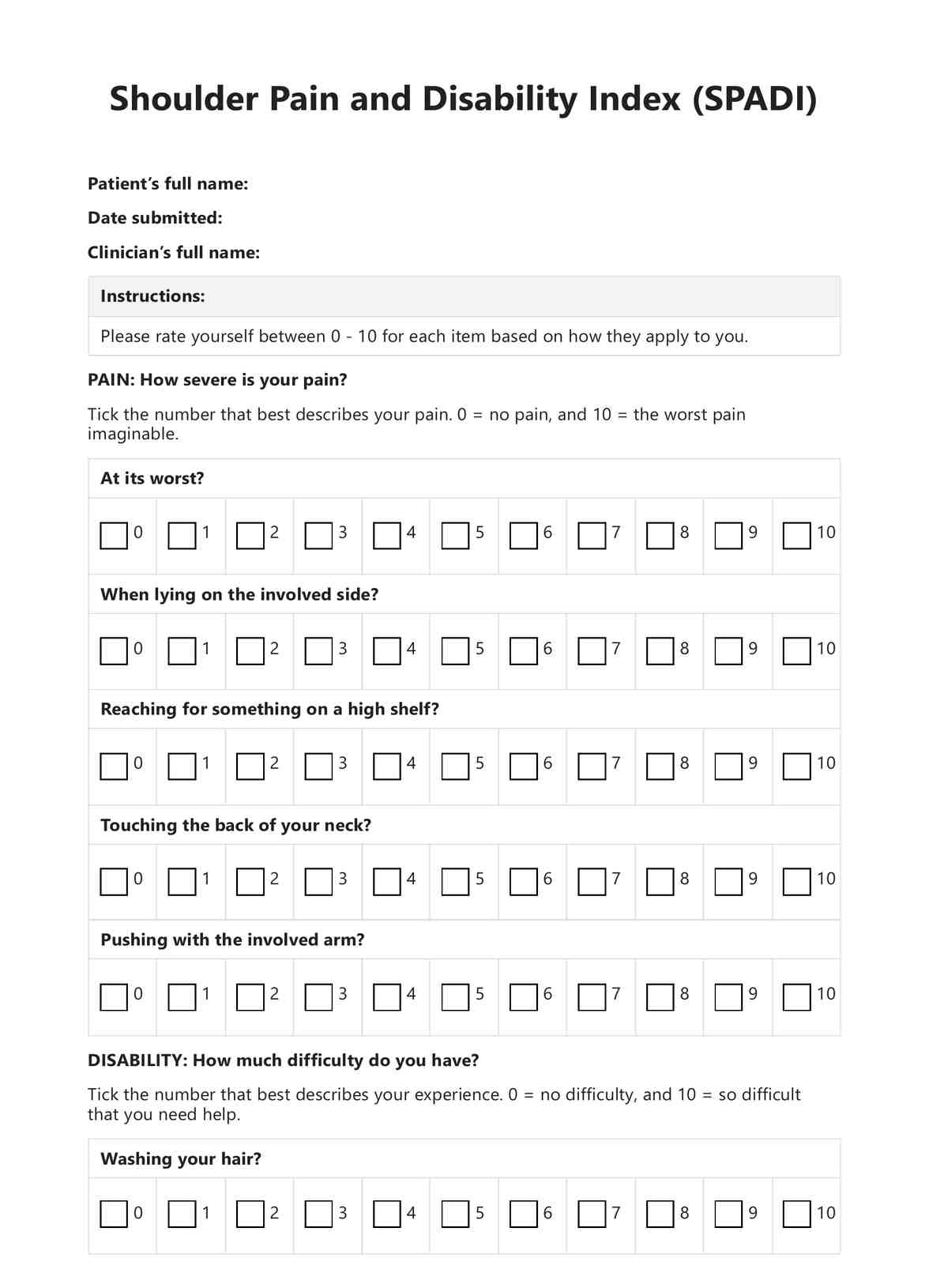It should take around 5 to 10 minutes. This includes the calculation of the scores. There are only 13 questions that need to be answered, and the patient only needs to tick the rating that applies to them per item.

Shoulder Pain and Disability Index
If you are handling a patient dealing with shoulder pain, issue the Shoulder Pain and Disability Index and have them rate themselves based on the pain they are feeling and how it’s affecting their functional activities.
Shoulder Pain and Disability Index Template
Commonly asked questions
It doesn’t matter what particular shoulder condition the patient has. So long as there is pain and their quality of life has been impacted, the SPADI can be used to assess the patient.
Yes, because you will act according to what your patient is feeling and how their shoulder pain has impacted them. It is subjective, but the scoring system should give the index a semblance of objectivity. The results should help professionals determine the necessary tests that should be conducted, or what goes into a tailor-fitted treatment plan for the patient.
EHR and practice management software
Get started for free
*No credit card required
Free
$0/usd
Unlimited clients
Telehealth
1GB of storage
Client portal text
Automated billing and online payments











